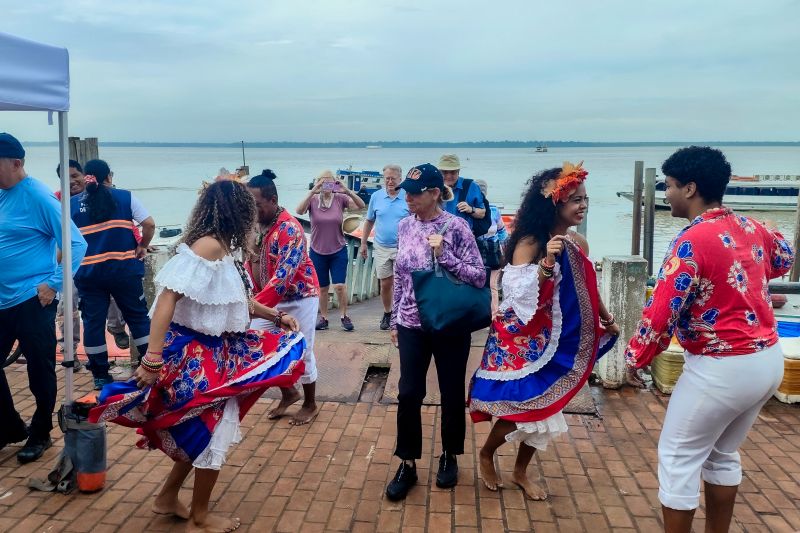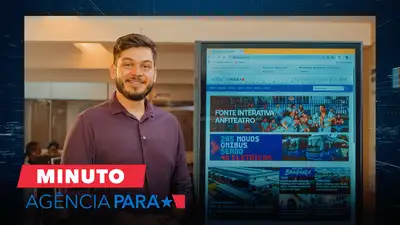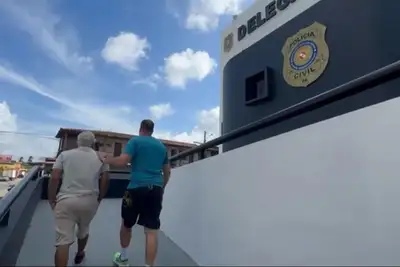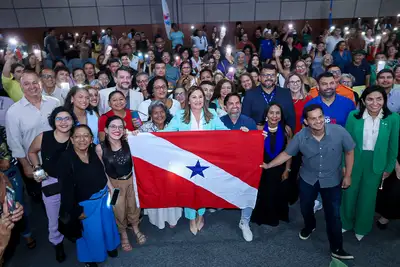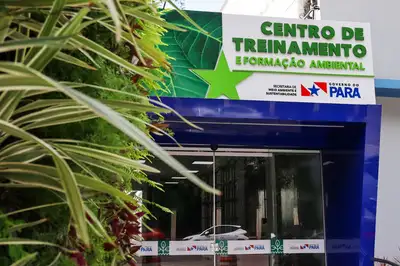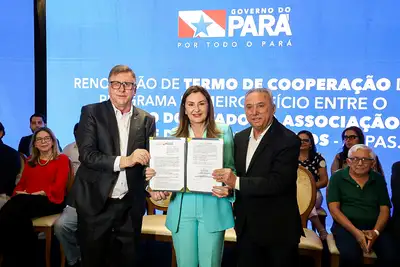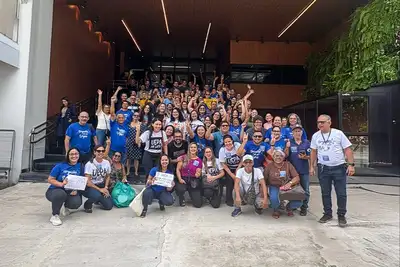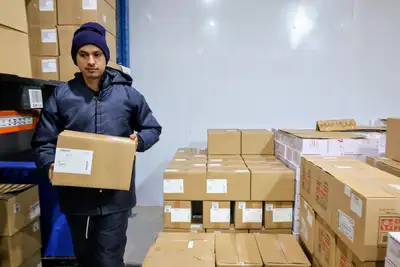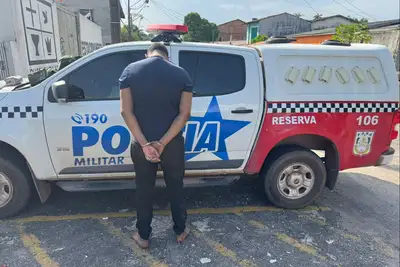Tourism sector boosts economy and prepares Pará for COP30
Driven by the Conference, the state projects growth in visitor flow in 2025 and reinforces investments in training, promotion, and tourism infrastructure
Driven by the United Nations Climate Change Conference (COP30), which will take place in November in Belém, Pará is expected to attract around 1.5 million visitors throughout this year. With this increase in tourist flow, the sector projects growth of over 20% in 2025. This movement is expected to consolidate the state as one of the main destinations in the Amazon and strengthen its presence in the national and international tourism scene.
In 2024, Pará received more than 1.2 million tourists, a 15.4% increase compared to 2023, according to data from the Pará Tourism Observatory, released by the State Department of Tourism (Setur). This advance generated a significant economic impact, with revenue exceeding R$ 870 million — combining the spending of national and international tourists visiting Pará in the accumulated total of last year — and projects even stronger expectations for the close of this year, which has COP30 as its main attraction.
Over the past few years, the state government has invested in structuring programs, partnerships, and professional training, which highlight Pará on the national and international stage. One of the main strategies adopted has been the promotion of the state at national and international fairs, an action coordinated by Setur to increase the visibility of Pará's tourist destinations. In 2024, the department participated in ten events of this kind.
Participation in large-scale events, such as the Lisbon Tourism Exchange (Portugal), ITB Berlin (Germany), Fitur (Madrid, Spain), World Travel Market Latin America (WTM-LA) in São Paulo (SP), Festuris in Gramado (RS), the National Tourism Fair in Brasília (DF), and Abav Expo are examples of platforms where Pará showcases its potential, with itineraries and destinations that highlight the region's natural, cultural, and historical diversity.
According to the Secretary of Tourism of Pará, Eduardo Costa, "participation in fairs is essential to put Pará on the map of major tourist destinations in Brazil and the world. We are expanding partnerships, attracting investments, and showcasing the unique beauties of our state."
In addition to promotion, the state government invests in the regionalization and structuring of destinations through initiatives such as the Federal Government's Tourism Regionalization Program (PRT), which includes workshops, technical seminars, and updates and training courses for Cadastur 4.0 with entrepreneurs and municipal managers, facilitating the registration and formalization of tourism service providers. These programs ensure the organization and qualification of tourist regions, strengthening local development and the offering of diversified tourism products.
Responsible tourism is another priority area, aiming to reconcile tourism activity with environmental preservation and respect for traditional communities, a fundamental basis for the sustainability of the sector.
Access to credit and professional training - Access to credit has been another front worked on by Setur, in partnership with financial institutions such as the Bank of Pará (Banpará), Banco do Brasil, and Banco da Amazônia. Specific credit lines, such as the General Tourism Fund (Fungetur), are available for small and medium tourism entrepreneurs, fostering investments in infrastructure, equipment, and services.
Training and professional qualification also gain prominence on Setur's agenda. Technical and specialized courses, such as “Trails and Hikes” and “Birdwatching,” have been conducted to prepare tour guides, agents, and other workers in the sector to meet the growing and diverse demand, further promoting ecotourism and ensuring positive experiences for visitors. The partnership with the Ministry of Tourism and Embratur has strengthened this process, expanding the reach and quality of training actions.
For Carla Rodrigues, a student of the course held in Alter do Chão, the training was essential for her professional development. “The trail guide course is comprehensive, training new professionals who above all know how to care for nature and will propagate this. We learned various techniques and the main thing: environmental preservation,” she emphasizes.
According to Secretary Eduardo Costa, the search for experiences linked to nature, such as those offered in ecotourism itineraries, reflects a growing trend among the state's visitors. “Pará has attracted tourists seeking contact with Amazonian biodiversity, river beaches, and typical cultural manifestations. These numbers reinforce the importance of continuing to invest in infrastructure, security, and training to consolidate Pará as one of the main tourist destinations in the North Region.”
Catalyst for investments - The preparation for COP 30 has been a catalyst for sustainable tourism in Pará. The expectation is that the international event will attract thousands of visitors, consolidating the state as a reference in environmental practices and responsible tourism. To this end, Setur is aligning training actions, structuring tourist itineraries, and coordinating with environmental agencies to ensure excellence in services.
In addition to investments in infrastructure and training from the State Government, Setur has promoted seminars and workshops involving local communities, entrepreneurs, and public agencies to strengthen community tourism and sustainable base tourism. These initiatives aim to foster local entrepreneurship, promoting job and income generation, and valuing Pará's cultural and environmental heritage.
With the approach of COP30, the Government of the State of Pará is committed to ensuring adequate infrastructure to welcome the event participants. Among the strategies adopted, the construction of new hotels and the diversification of accommodation options, including cruises and local residences with seasonal rentals, stand out to meet the high expected demand. Additionally, municipalities in Greater Belém, such as Ananindeua, Marituba, Benevides, and Castanhal, as well as districts like Mosqueiro and Outeiro, are integrated into the planning to expand the supply of beds and provide distinct experiences in the Amazon region. The partnership with platforms like Airbnb and Booking encourages residents to temporarily make their homes available, promoting the local economy and cultural integration between visitors and residents.
Infrastructure and training as a legacy - Among the main investments and works, the City Park, the development of the Doca Linear Park, Porto Futuro II, and the execution of macro-drainage works stand out, initiatives aimed at improving urban infrastructure, ensuring mobility and comfort for COP30 participants, as well as promoting the revitalization of strategic areas of the city.
In addition to physical works, the state government has implemented the Capacita COP 30 program, which has already achieved over 22,000 certifications in professional training courses. The qualifications are managed by the Secretary of Science, Technology, Higher, Professional, and Technological Education (Sectet).
“Tourism is a vector of development that must be treated with planning and responsibility. In Pará, we have a robust and integrated agenda that promotes the sustainable growth of the sector, values professionals, and expands opportunities for the local population. We are focused on making Pará a nationally and internationally recognized tourist destination,” concludes Eduardo Costa.


